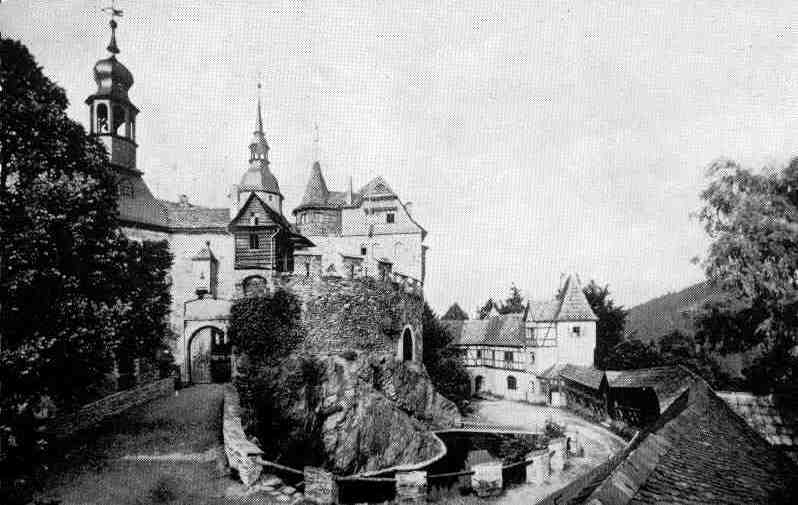
Admiral Canaris, chief of defense, had problems with Adolf Hitler. He
told him to move to Castle Lauenstein for a "period of changes". The
rules for his stay there were: ,,free to move on the castle grounds -
no contact to the outside population ,,.
Not
only Canaris was on Castle Lauenstein, but also the Department of
Economy (VI-Wi) of the RSHA (Reichssicherheitshauptamt). Experts were
busy counterfeiting passports and dollar bills as well as developing new
secret inks, mikro cameras and copy machines.
The Castle Commander Focke, Secret Service Officer in the Oberkommando der
Wehrmacht, moved millions outside the country, together with the
managers of IG Farben.
About 10 miles from Castle Lauenstein, IG Farben had begun to prepare
the underground rooms of the slate mine
,,Gl�ckauf-Brand" in order to use them for the underground
production of gasoline. (secret code name Steinbock). The rooms had
been used as secret deposits instead, since it was too late to start a
war production.
Also
on the Castle Lauenstein was SD-Hauptsturmf�hrer Hansch. He was
responsible for the hiding of the last secret transports with the
counterfeiting tools and several trucks full of pound bills. He also
participated in the "Aktion Bernhard". The tools were made in the
Chemigraphical Institute of the SD in Friedenthal near Sachsenhausen.
Hansch was the head of the SD Bewachungskommandos for the "Aktion
Bernhard".
The
General Major of the police, Walter
Schellenberg, also visited Castle Lauenstein more than once. He was
also the head of the "Amt VI" and lead the transfer of millions for
the secret service on order of the monopolies.
Mr. Storckmann,
a member of the SS with unknown grade, was "driver for special
transports" in 1945 on the Castle Lauenstein. He would be able to
report a lot, if he would still be alive. Other drivers have been Stabsfeldwebel Tepfer
and Firmenich.
Shortly before his violent death, the investigator Georg Stein from
Hamburg found out, that the radio message about the hiding of the
Amber Room was sent from Castle Lauenstein. Soon after his discovery,
he was found killed in a forest in Southern Bavaria. Several people
tried making it look like a suicide but the photos speak a clear
language and the police record about his death is missing. For this
and other reasons, the Amber Room Organisation today mostly supports
the theory of the K.A.K.T.U.S. group, which discovered several secret
deposits in the slate mines close to the castle.
All latest
results of investigation are leading us to this area as the last
hiding place for the Amber Room and other missed things...

